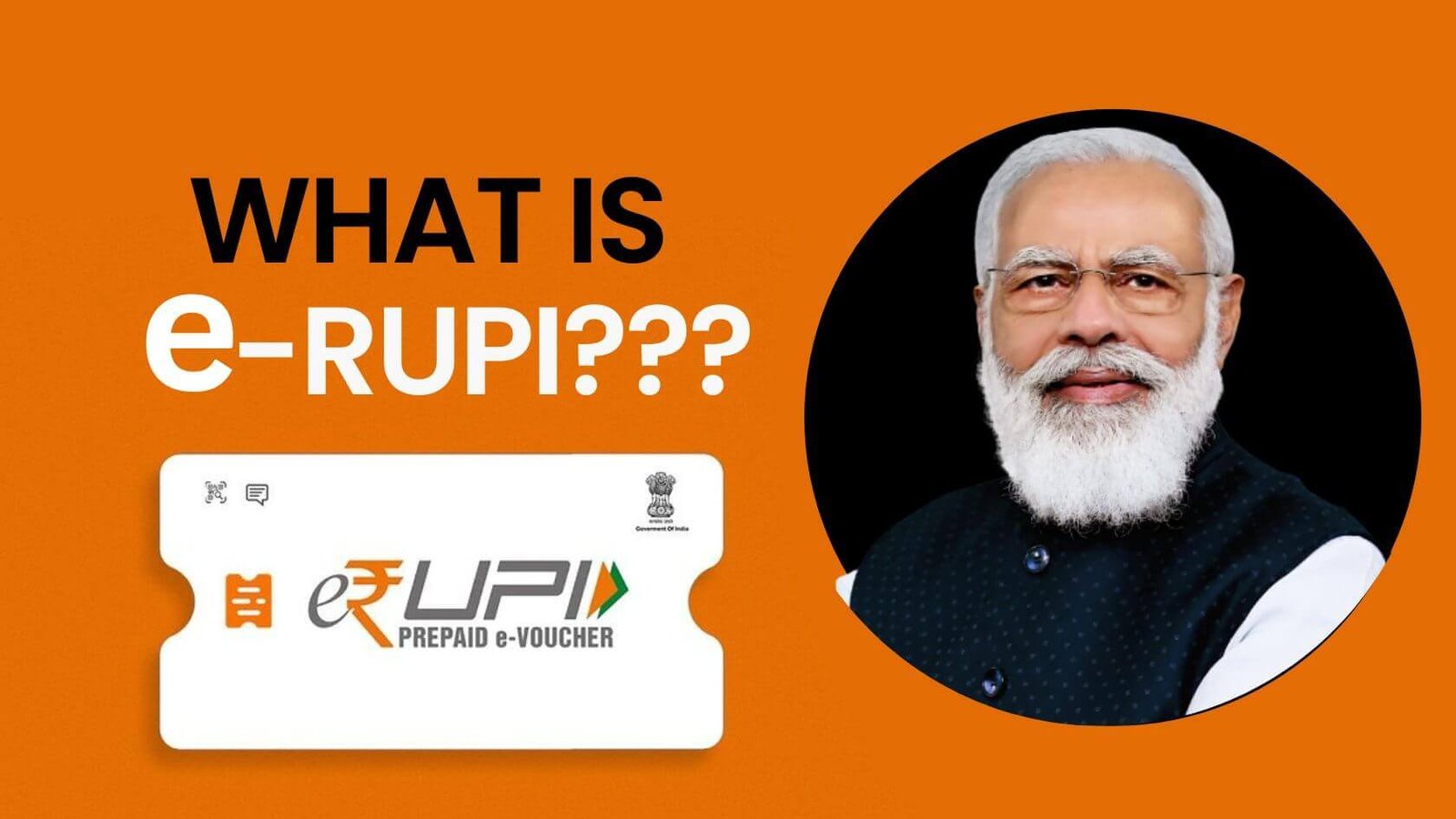What is Digital Rupee (e-RUPI)? e-RUPI Vs UPI Working
In recent years, digital payment systems have gained widespread popularity and revolutionized the way people transact. One such system that emerged as a game-changer in India is the Unified Payments Interface (UPI).
However, the government of India has now announced its plan to launch its own Central Bank Digital Currency (CBDC), also known as the Digital Rupee or e-RUPI.
This article aims to provide an overview of e-RUPI, its working, its technology, its potential impact, and its Advantage compared to UPI.
The Rise of UPI: A Game-Changing Technology
Early Challenges and Massive Adoption When UPI was introduced in 2016, it faced significant challenges and witnessed minimal adoption in its initial months. However, within three years, UPI gained massive popularity and became a major success story in India.
By 2022, UPI recorded approximately 500 crore transactions every month. Its success can be attributed to the numerous benefits it offered to end-users, such as convenience, safety, security, speed, and ease of use.
UPI’s Global Adoption The success of UPI in India has inspired other countries like the UK, France, Nepal, and Malaysia to adopt similar digital payment systems. The primary reason behind UPI’s global adoption is its ability to provide significant advantages to users.
Understanding the Digital Rupee (e-RUPI)
The Need for CBDC in the Monetary Ecosystem To comprehend the concept of e-RUPI, it is essential to understand the two main categories of money: physical and digital.
While physical money refers to currency notes and coins, digital money encompasses various forms such as bank account balances, CBDC, and digital wallets like Amazon or PayTM. It’s important to note that UPI is not money itself but a facilitator of digital payments.
The Role of Ledgers and Centralized Control The Reserve Bank of India (RBI) controls the payment and settlement system in India through a master ledger, which keeps track of all digital transactions.
Commercial banks also maintain their own ledgers, connected to the master ledger, allowing RBI to monitor the flow of digital money in the economy.
Currently, approximately 92% of the money in the Indian economy exists in digital format, with only 8% in physical cash.
Understanding CBDC?
An Electronic Version of the Rupee CBDC, or e-RUPI, is not a new currency but an electronic representation of the sovereign currency, the Indian Rupee. It can be maintained either in a conventional centrally controlled database or through distributed ledger technology (blockchain).
CBDC offers the same transactional benefits as other forms of digital money and aims to provide easier, faster, and cheaper transactions.
Exploring the Technology Behind CBDC
Understanding Blockchain Blockchain is a network that enables the transfer of data from one point to another. In the context of money, it allows for the transfer of funds between accounts.
CBDC, like Bitcoin and Ethereum, can be built on a blockchain network, which facilitates secure and transparent transactions.
Centralized vs. Distributed Ledgers
Ledgers can be centralized or distributed. In a centralized ledger system, a specific entity, such as RBI or a commercial bank, maintains and controls the ledger.
In contrast, a distributed ledger is not controlled by a single entity but by a self-executing code called a smart contract. CBDC is expected to be built on a centralized ledger maintained by RBI.
UPI vs. CBDC: Understanding the Differences
UPI as a Payment Enabler
UPI, although widely used for digital payments, is not a currency in itself. It operates as a payment interface that facilitates the transfer of funds between different bank accounts.
UPI transactions are based on the existing currency (Indian Rupee) and require the involvement of commercial banks for settlement. It relies on the existing banking infrastructure and enables peer-to-peer transfers, merchant payments, and various other transactions.
CBDC vs UPI: Potential Advantages
The introduction of e-RUPI as a CBDC presents several potential advantages over UPI:
Direct Digital Representation of Currency: Unlike UPI, which operates on top of the existing currency, e-RUPI represents a direct digital form of the Indian Rupee. This eliminates the need for intermediaries like banks and streamlines the payment process.
Increased Efficiency: With e-RUPI, transactions can be executed more efficiently due to the direct transfer of digital currency. It reduces the need for manual intervention, paperwork, and processing time, making transactions faster and more convenient.
Enhanced Security and Privacy: CBDC transactions can potentially offer higher levels of security and privacy. Blockchain technology, if employed, can ensure transparency, immutability, and protection against fraud or tampering.
Financial Inclusion: CBDC has the potential to promote financial inclusion by providing access to digital currency to individuals who may not have traditional banking services. It can enable secure and easy digital transactions for all, bridging the gap between the banked and unbanked populations.
Challenges and Considerations
While e-RUPI brings several advantages, there are also challenges and considerations to address:
Technological Infrastructure:
Implementing e-RUPI requires a robust technological infrastructure to handle the volume of transactions securely and efficiently. This involves ensuring network stability, scalability, and data privacy.
Adoption and Acceptance:
Widespread adoption and acceptance of e-RUPI among individuals, businesses, and merchants would be crucial for its success. Building trust and addressing any concerns about the new digital currency would be necessary.
Regulatory Framework:
Developing a comprehensive regulatory framework for CBDC is essential to address issues such as anti-money laundering (AML), know-your-customer (KYC) requirements, data protection, and consumer rights.
Coexistence with Existing Systems:
It’s important to ensure a smooth transition and coexistence of e-RUPI with existing payment systems like UPI. Interoperability and compatibility between different digital payment platforms would be crucial.
Final Thoughts!
The introduction of e-RUPI as a Central Bank Digital Currency in India offers potential benefits in terms of efficiency, security, and financial inclusion. While UPI has revolutionized digital payments in the country, CBDC has the potential to further streamline transactions and provide a direct representation of the Indian Rupee in a digital form.
However, successful implementation would require addressing technological, regulatory, and adoption challenges. The future of e-RUPI and its impact compared to UPI will depend on various factors, including infrastructure development, regulatory policies, and user acceptance.




